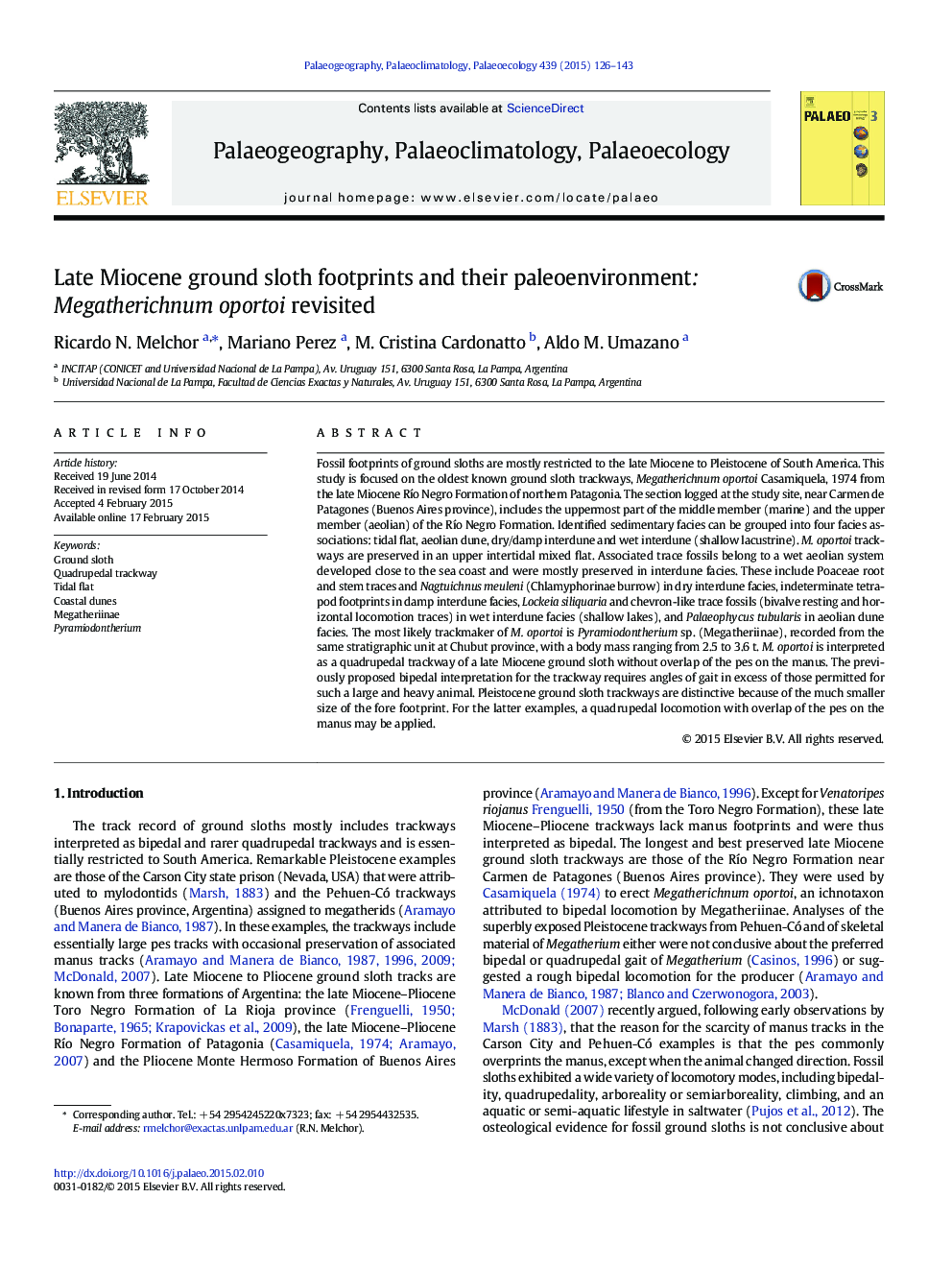| کد مقاله | کد نشریه | سال انتشار | مقاله انگلیسی | نسخه تمام متن |
|---|---|---|---|---|
| 4465875 | 1622151 | 2015 | 18 صفحه PDF | دانلود رایگان |

• Revised interpretation of late Miocene ground sloth trackway formerly thought bipedal.
• Likely producer is Pyramiodontherium, a very large (2.5–3.6 t) megatherine.
• The trackway is interpreted as quadrupedal; a bipedal locomotion is unlikely.
• The megatherine walked in an upper intertidal flat flanked by coastal dunes and lakes.
• Associated vertebrate and invertebrate ichnofauna mostly occur in interdune facies.
Fossil footprints of ground sloths are mostly restricted to the late Miocene to Pleistocene of South America. This study is focused on the oldest known ground sloth trackways, Megatherichnum oportoi Casamiquela, 1974 from the late Miocene Río Negro Formation of northern Patagonia. The section logged at the study site, near Carmen de Patagones (Buenos Aires province), includes the uppermost part of the middle member (marine) and the upper member (aeolian) of the Río Negro Formation. Identified sedimentary facies can be grouped into four facies associations: tidal flat, aeolian dune, dry/damp interdune and wet interdune (shallow lacustrine). M. oportoi trackways are preserved in an upper intertidal mixed flat. Associated trace fossils belong to a wet aeolian system developed close to the sea coast and were mostly preserved in interdune facies. These include Poaceae root and stem traces and Nagtuichnus meuleni (Chlamyphorinae burrow) in dry interdune facies, indeterminate tetrapod footprints in damp interdune facies, Lockeia siliquaria and chevron-like trace fossils (bivalve resting and horizontal locomotion traces) in wet interdune facies (shallow lakes), and Palaeophycus tubularis in aeolian dune facies. The most likely trackmaker of M. oportoi is Pyramiodontherium sp. (Megatheriinae), recorded from the same stratigraphic unit at Chubut province, with a body mass ranging from 2.5 to 3.6 t. M. oportoi is interpreted as a quadrupedal trackway of a late Miocene ground sloth without overlap of the pes on the manus. The previously proposed bipedal interpretation for the trackway requires angles of gait in excess of those permitted for such a large and heavy animal. Pleistocene ground sloth trackways are distinctive because of the much smaller size of the fore footprint. For the latter examples, a quadrupedal locomotion with overlap of the pes on the manus may be applied.
Figure optionsDownload high-quality image (200 K)Download as PowerPoint slide
Journal: Palaeogeography, Palaeoclimatology, Palaeoecology - Volume 439, 1 December 2015, Pages 126–143